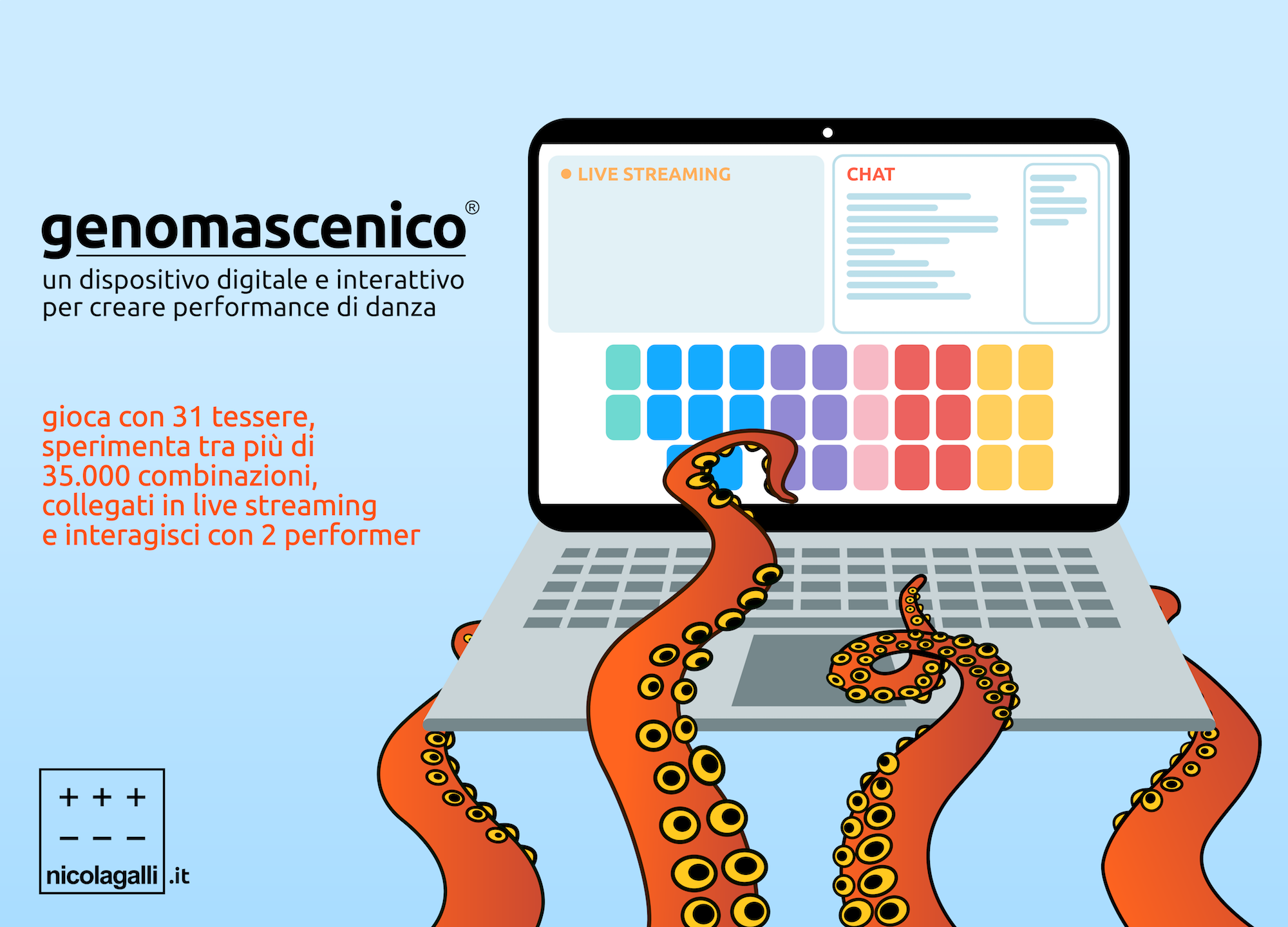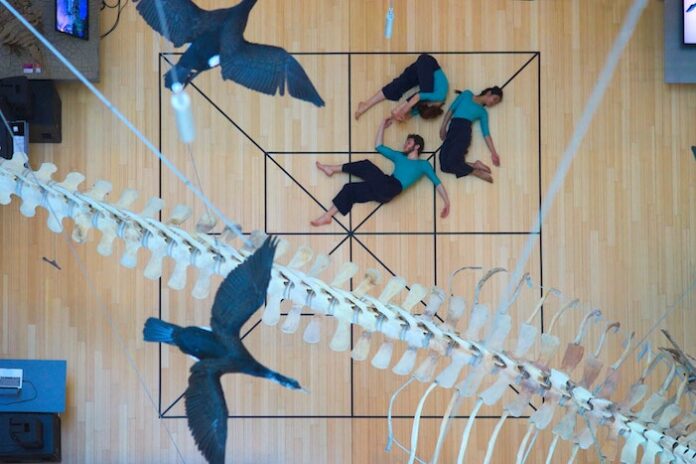Dance during the pandemic: Digital alternatives
Creating dancing in the times of the pandemic is a courageous undertaking, of great inventiveness. This is while there is a debate between the supporters of the theatre exclusively in presence and explorers of the new, broad, unpublished, fast, online possibilities.
Among the ways and spaces of pre-virus creation, the Creative Residences at the national choreographic centers and the networked regional centers were (and they will go back to being) opportunities to share the process of construction of dance.
However, what can be done when it becomes hard to travel, to meet, to offer your work to the live audience? Among the solutions, the “digital residences” stand out, that go beyond the offer of streaming shows, free-of-charge or with e.Ticket (for example: Nederlands Dans Theater and Scapino Ballet from Holland, English Royal Ballet, Israeli Batsheva Dance Company) and involve the users in drawing the choreography.
 Genoma Scenico
Genoma Scenico
Among the interactivity proposals “moving the dancers from home”, the Genoma Scenico (Scenic Genome) stands out, by the 30-year-old and talented Nicola Galli, the result of a production supported by TIR Danza, from the Science Museum of Trento and from Rovereto East West Festival. Technology and science meet here in the art of the body.
Who “plays” to create dance from his keyboard, with a symbolic €3 ticket, has 4 performers available, 33 tiles-elements, to create more than 70,000 combinations.
Like any human being he has his own genetic code, in the same way the public is invited to determine the original uniqueness of the performance that is generated, each time different, through a playful device freely inspired by genomic research.
Customize your performance
The 33 tiles arranged on a virtual gaming table represent a variety of parameters to use to design a dance. Each remote participant-creator can select the number of performers, spaces, timing, trajectory, lighting, that will be put into operation in a live performance by the quartet of dancers available, following the instructions received from each of the players-choreographers.
From Rudolf Laban to many modern dance theorists in the twentieth century, Nicola Galli’s parameters have made history.
The artistic game ends with a challenge from the performers to the audience. You will have to guess by what parameters, this time chosen by the dancers and not revealed, a sequence is developed to be decoded by recognizing the peculiar elements of the genome of the proposed piece.








